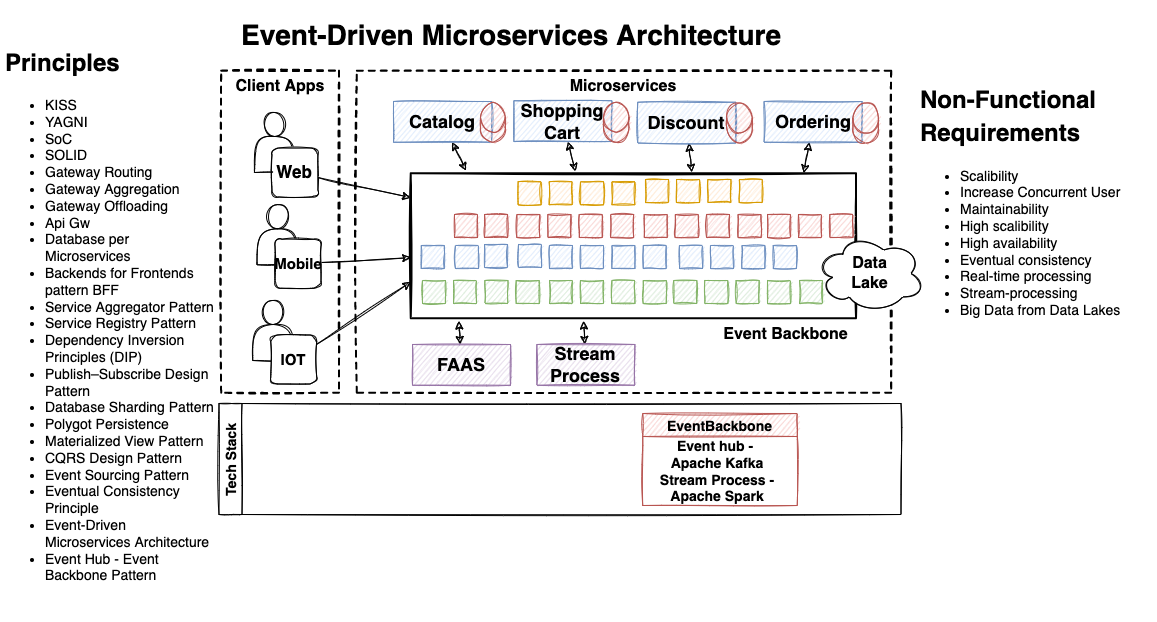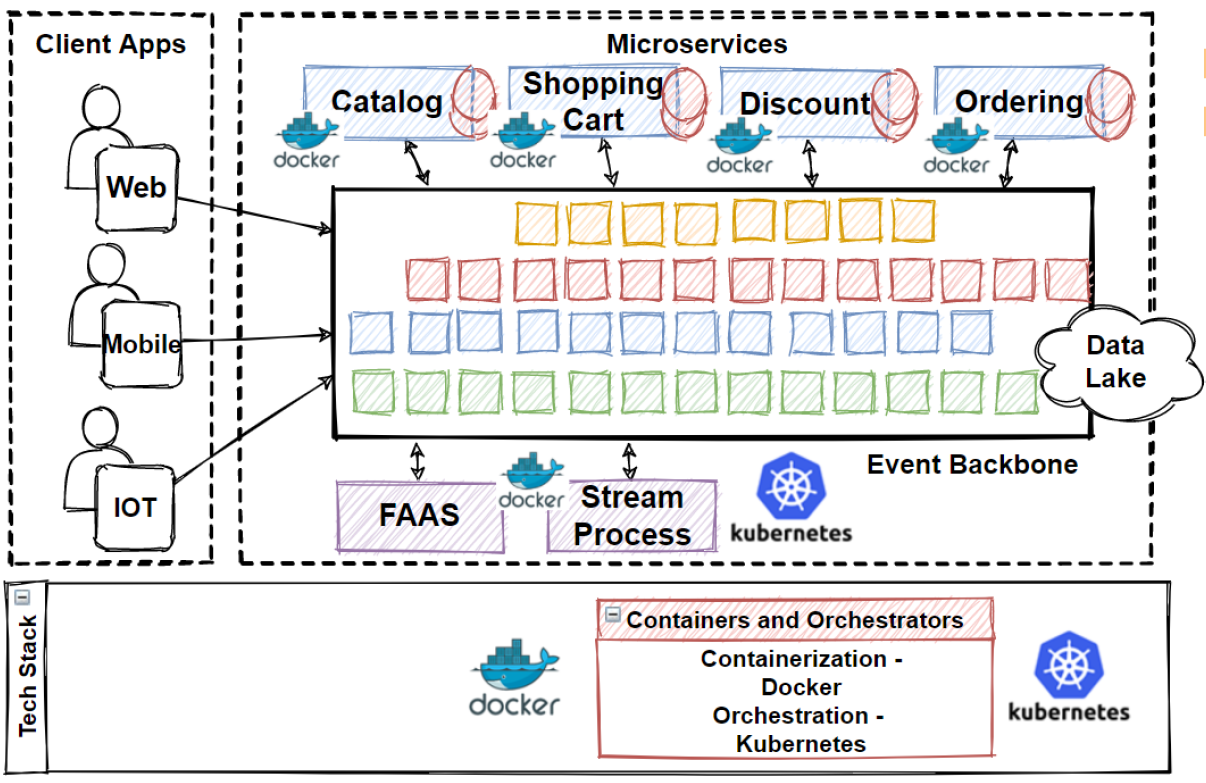架构模式与原则之完结篇
Event-Driven Microservices Architecture
事件驱动架构
- 通过事件消息与微服务通信(Communicating with microservices via event messages)
- 发布/订阅模式和Kafka消息代理系统(Publish/subscriber pattern and Kafka message broker systems)
- 异步行为和松耦合(Asynchronous behavior and loosely coupled)
- 实时消息平台、流处理、事件中心、实时处理、批处理、数据智能(Real-time messaging platforms, stream-processing, event hubs, real-timeprocessing ,batch processing, data intelligence)
- 每件事都是通过事件中心(Event-Hubs)进行沟通(Every thing is communication via Event-Hubs)
- 可以进行实时处理的大型事件存储数据库(Huge event store database that can make real-time processing)
架构设计案例

Microservices Distributed Caching
分布式缓存
- 缓存使应用程序更快(Caching makes application faster)
- 提高性能、可扩展性和可用性(Increase performance, scalability and availability)
- 在读取数据时使用缓存减少延迟(Reducing latency with cache when reading data)
- 避免重新计算过程(Avoid re-calculation processes)
- 分布式缓存通过返回缓存数据来提高系统响应能力(The distributed cache increases system responsiveness by returning cached data)
- 独立分离缓存服务器规模(Separating the cache server scale independently)
分布式缓存架构设计

Microservices Deployments with Containers and Orchestrators

